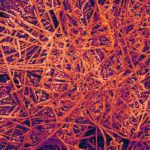Link to Pubmed [PMID] – 32020336
Semin Immunopathol 2020 Feb;
In the long co-evolution of host-pathogen interaction, bacteria have developed sophisticated strategies to manipulate host cell mechanisms and reprogram host transcription. Targeting chromatin, mainly through post-translational modification (PTM) of histone proteins, is one strategy that has been revealed over the last decade. Indeed, histone modifications play a crucial role in regulating transcription during cell type and stimulus specific responses, making them good targets during infection. Therefore, the study of host-pathogen interactions provides breakthroughs in understanding virulence mechanisms, but also in host cell mechanisms. Although chromatin is regulated by DNA methylation, noncoding RNAs, and post-translational modifications of histones, most studies have concentrated on bacteria-induced histone modifications, which will be the focus of this review. We will discuss the different mechanisms used by bacteria to induce histone PTMs, whether it is through direct targeting of pathogen effector enzymes, or indirectly through modulation of cellular signaling cascade. We will summarize the concepts we learned in cell biology from exploring bacteria-triggered histone modifications, by focusing on the signaling cascades modified by bacteria, bacterial mimics of eukaryotic enzymes, and the novel histone marks imposed upon infection.

